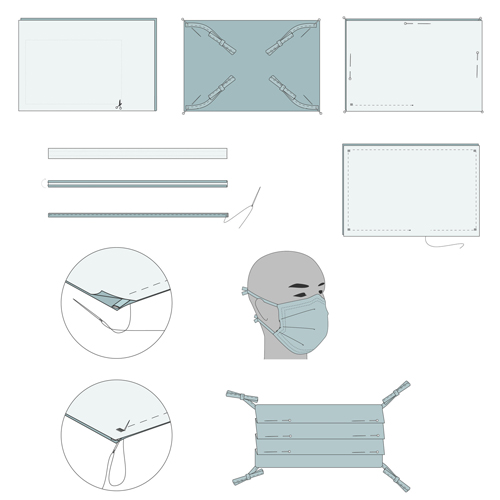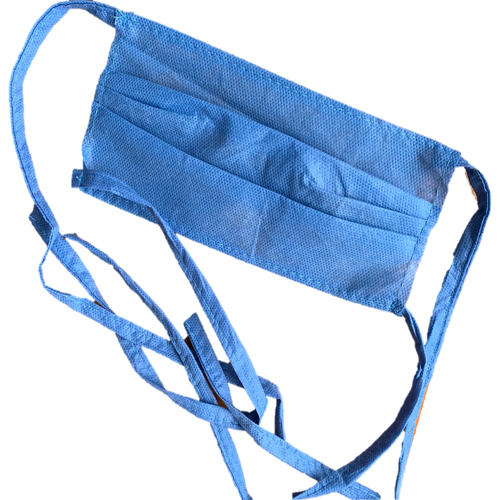
Coronavirus pandemic has gripped the entire world and nobody can ascertain how long it is here to stay.
It is important to limit trips outside. Wash your hands with soap and water or use a sanitizer frequently. Do note, civilians should avoid wearing medical-grade masks as they are in short supply and highly needed by healthcare workers in the front line.
You can consider wearing a mask to limit the spread of respiratory droplets that can in turn slow the spread of the coronavirus.
Here are 8 steps that will help you stitch your own mask
- Things you’ll need
- Needle and thread
- Sewing machine( if you have one)
- Scissors
- Pins or clips or safety pins or paper clips to hold the fabric in place
- A 20 by 20 inches cotton fabric
- 4 strips( 18 inches long and ¾ inch wide) of cotton fabric for ties or 4 flat clean shoelaces or 2 flat sewing elastics( 7 inches long and ¼ inch wide)
Let’s get started!

Step1
Pre-wash the piece of cotton fabric on the warmest setting and dry it using high heat. Fold the cloth in half. Cut out 9.5" by 6.5" rectangle pieces to create two identical layers to make the base of your mask.
Next, to make the ties, cut 4 thin pieces of the fabric about 18” long and ¾” wide. Fold the fabric twice lengthwise. Fold it once more to tuck the rough edges inside. Now, sew a straight line in the middle to prevent the ties from having frayed edges.
Step2
Take one of the fabric layers and with the right side facing you, pin down the fabric ties, one on each corner. Make sure that the ties are gathered in the center of the layer.
You may use sewing elastic for fabric ties. However, they cannot be bleached and are not easy to clean. Also, people with latex allergy cannot wear it. If you are using elastics, attach them to the first layer of fabric by securing the ends at the corners such that they form small hoops. Make sure that the elastic is inside the perimeter of your fabric.
Step3
Next, align the second layer of fabric with the first. The "right side" of the fabric should face each other and sandwich the fabric ties or elastics. Now, use pins to secure the fabric sandwich together.
Step4
Mark a midway point. Next, from the middle, sew a straight line about ¼'' above the bottom edge of the fabric, towards the left-hand (bottom) corner. Make sure to remove all the pins as you sew past them.
Secure the fabric ties or elastics in the corners as you sew over their ends. Ensure that they are sandwiched by the two layers of fabric. The needle must go through the top layer, the end of the fabric tie, and the bottom layer of fabric. Sew a couple of times in both directions to secure all the ties.
Step5
Repeat the forward and backward motion at each corner to secure all the ties or elastics in place and sew around the perimeter of the fabric layers. Stitch your way toward the starting point but stop to keep a 1 ½’’ gap.
Step6
Turn the fabric layer right-side-out from the gap so that the ties stick out, like little legs.
Step7
Make three staggered pleats along the length of the mask as if folding a paper fan. This will help the mask fit snugly on the wearer’s face. Secure all the pleats with pins.
Step8
Now that all your pleats are held in place by pins, sew around the perimeter of the mask. Stitch ¼” away from the edge of the seam. This is known as Top Stitch. Be careful while stitching over the pleats as the fabric may be a little thick.
Topstitch again about ¼" in from the first round of stitching done previously.
Your mask is ready!

Note
According to Stanford Anaesthesia Informatics and Media Lab, Tea towels are better to use as fabric for your mask than T-shirt or linens.
Use a mask every time you leave the house. And do remember to wash it as soon as you return home.






